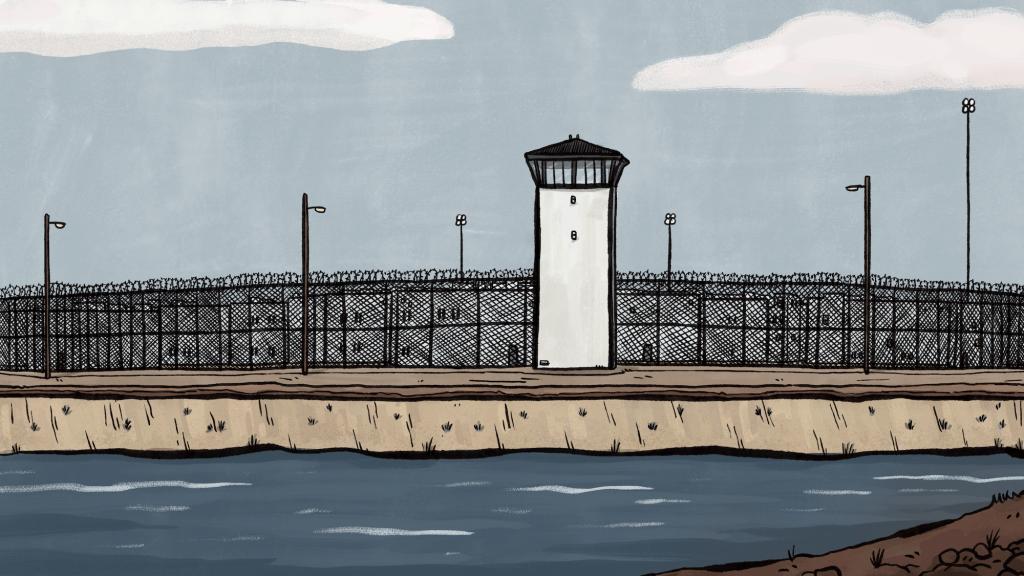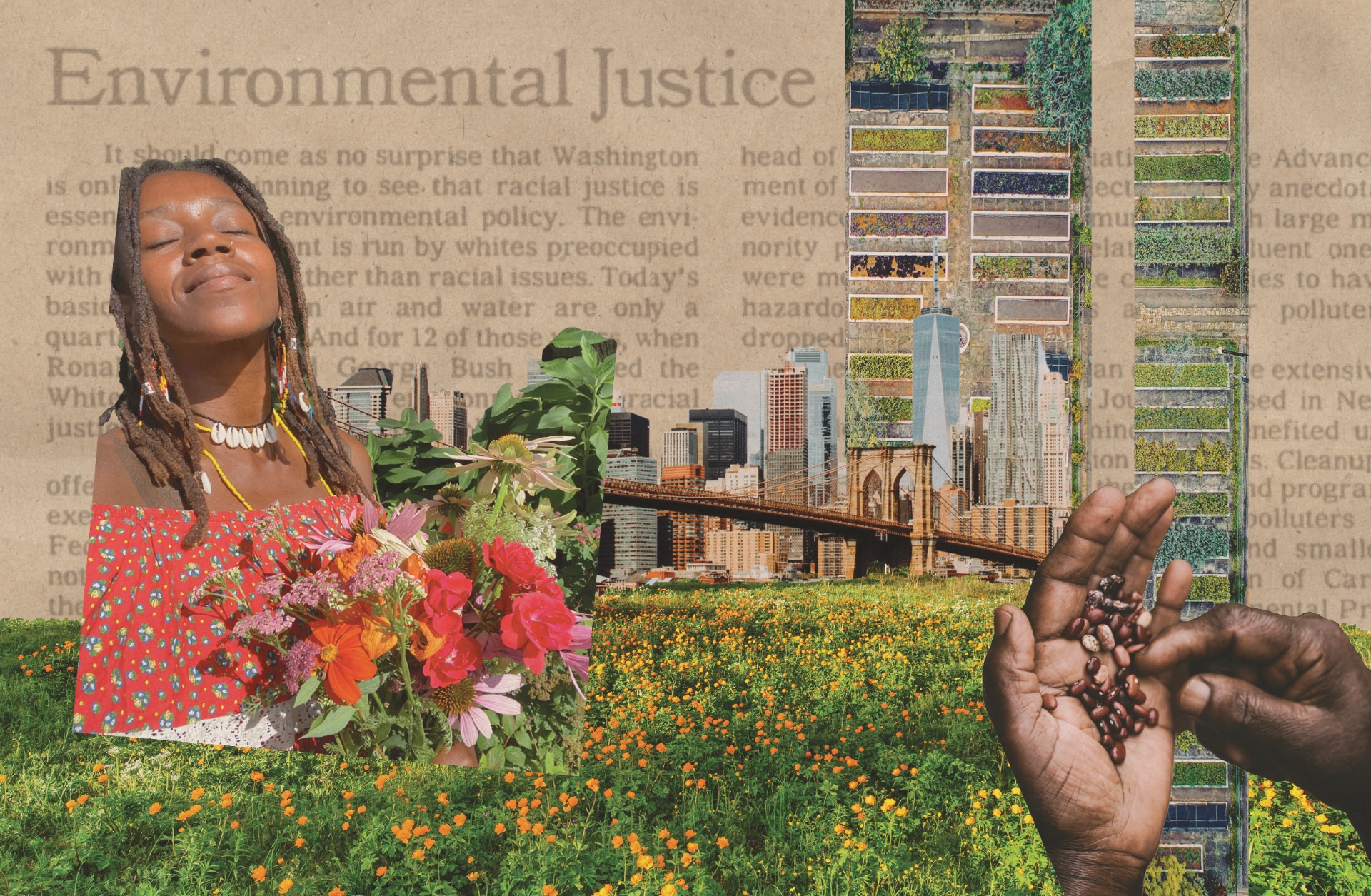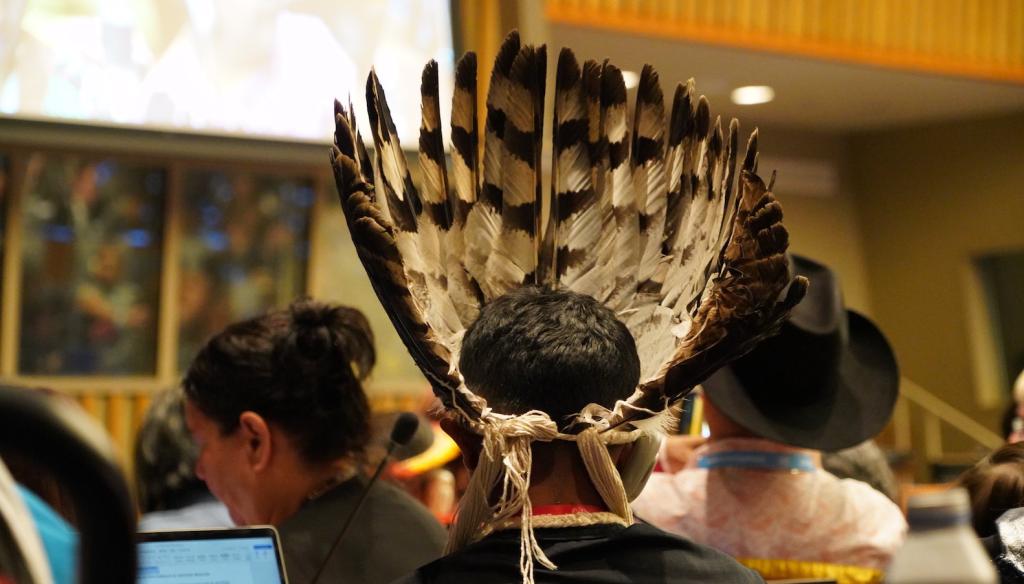This story is published in partnership with Earth in Color, a platform exploring the intersections of Blackness and Greenness. It is part of the Eatin’ Good collection — focused on climate-friendly eating, foodways of the African diaspora, food justice, and sustainable agricultural practices and community-generated initiatives grown out of New York.
Imagine a bountiful plot of land, fences overgrown and overflowing with life: milkweed, mugwort, chicory, goldenrod, echinacea, yarrow, and raspberry bushes sprinkled among ripening apple, pear, and peach trees. Herbs like lemon balm, dill, mint, and oregano are boundless. There’s a colorful spread of fat melons, strawberries, cucumbers, butternut squash, beets, lettuce, kale, and tomatoes. There’s a blueberry bush, though it’s been stripped bare — food for the birds and bugs. The groundhogs and other small creatures — pesky as they may be — spend their days trudging lazily through the foliage. This place takes up about as much space as a smaller brownstone apartment — but it’s a jungle oasis. At least that’s the language that artist, environmental activist, and land steward Nkoula Badila uses to describe the ecological diversity of her backyard urban garden in Hudson, New York.
“My childhood has definitely taught me to find my peace in nature,” Badila said. Her family spent a lot of time visiting and volunteering at local urban farms and gardens when she was growing up. “I feel like just having that influence and lifestyle around was very grounding.”
Badila’s backyard garden is also something else—a space to preserve Black food traditions and cultivate community. “We are introducing a lot of these [gardening and farming methods] that are also things that our ancestors did,” Badila said. “We’re reintroducing those things and reclaiming how diverse, brilliant, and expansive our ancestors were.”
When you envision agriculture in the United States, you probably don’t picture spaces like Badila’s. And yet, sprouting in small downtown backyards or amidst the metal and concrete of many U.S. urban centers are surprisingly abundant growing spaces — community farms and backyard gardens, many of them Black-owned. Those spaces serve dual purposes as a local solution to food insecurity and a source of community cultivation in historically undervalued, underinvested, and abandoned areas.

These localized food systems find their roots in the food justice and community gardening movements of the ’60s and ’70s. In New York City, for example, urban farms emerged as one form of resistance and a safe haven in the face of police brutality and injustice. Urban farms persist today as a source of connection to culture and fresh, healthy produce.
These urban growing spaces are also increasingly being recognized as a solution to another pressing issue — climate change. “There are so many benefits of urban agriculture when it comes to mitigating climate change,” said Francine Miller, senior staff attorney and faculty member at the Vermont School of Law’s Center for Agriculture and Food Systems. “People need access to green space and they need access to local food. I think there are particular needs that are met in urban environments with more urban farming; the more access the better.”
In response to continued injustices, today many Black land stewards are building on a history of urban farming as a source of community care and local food production. They are continuing to invest in these spaces by passing their tools and experiences onto the next generation. And while many of them do not consider themselves climate activists, this same work offers a roadmap toward climate mitigation.
Urban gardens as food justice
Black foodways in this country have historically been hit twofold through exclusion from agribusiness and unequal access to fresh produce at home.
A 2021 analysis found that approximately one out of every five Black households in the US is located in a food desert—an area without adequate access to grocery stores or farmers markets. Some advocates prefer the term food apartheid to account for the racialized and intentionally discriminatory nature of food insecurity, describing a lack of access to nutritious food as a deliberate and systematic action against Black America. Combined with a history of Black farm loss, these disparities have created an environment where many Black and brown people grow up with very little connection to or say over the food they eat.
The concept of food justice as a counter to this imbalance was formalized during the 1962 Greenwood Food Blockade. That year, Black sharecroppers in the Mississippi Delta were cut off from the Federal Surplus Commodities Food Program, which already-struggling farmers relied on for food assistance in the winter months. Activists, including the Student Nonviolent Coordinating Committee, or SNCC, fought back against what they saw as retaliation from the all-white county Board of Supervisors against civil rights action in the area. The group established a food distribution program for affected farmers and ultimately petitioned the federal government to intervene. The fight for food access in both rural and urban America continued to evolve with initiatives like the Black Panther Party’s famous Free Breakfast for Children Program, established in 1969 to ensure that poor children had access to healthy food and to pressure local and national governments to improve their food access programs.
Since the movement’s inception, food justice initiatives have also included spaces where Black communities steward their own land to provide opportunities the system gave them no access to. Some of the most famous examples are the Ron Finley Project in Los Angeles, California, Dreaming Out Loud in Washington, D.C., and Soul Fire Farm in Grafton, New York. Those organizations have meshed sustainable and regenerative land practices with urban infrastructure to provide healthy, fresh produce to under-resourced and underfed, predominantly Black communities.
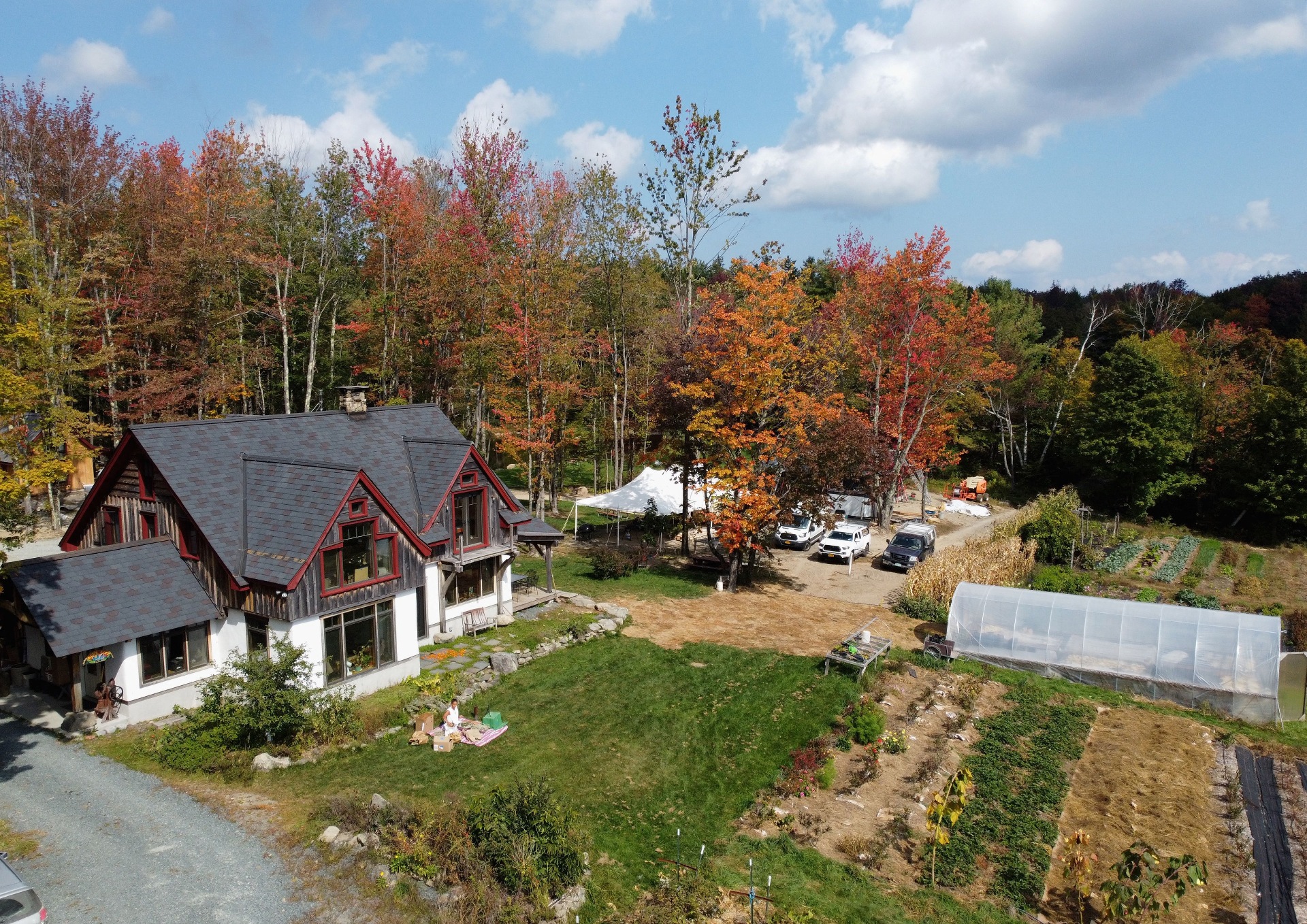
New York City, in particular, has served as a longstanding microcosm for urban health issues and fights for environmental justice, green space, and food access. From Hudson to Brooklyn, and from the South Bronx to East New York, Black land stewards have developed many of the city’s gardening spaces as a reaction to urban renewal, White flight, food apartheid, and larger government disinvestment in Black and brown neighborhoods.
Although food insecurity across New York state sits just below the national average, approximately 20 percent of Black households in the state can be considered food insecure, compared to 5 percent of white households.
Many New York community gardens sprouted up in the ‘60s and ‘70s. At the time, in well-known neighborhoods like Bedford-Stuyvesant in Brooklyn, riots against police brutality and long histories of injustice and exclusion in the boroughs set a tone for Black resistance. The crack epidemic was leaving many listless and on the street. In most cases, community gardens were a peaceful respite from the violence, and they were built in old churches and parking lots as a form of mutual aid, nature access, and community resilience.
An overlooked climate solution
“When I was young, I never thought of farming — because I grew up in the ‘60s, when farming was still looked back on as slave work,” explained Karen Washington, who is now an urban farming advocate, co-founder of the Black Farmers and Urban Gardeners (BUGS) Conference, and co-owner of Rise and Root Farm in Chester, New York. A former city girl and New York native, Washington got involved in the community gardening movement in the 1970s after learning about the health benefits of locally grown food. People she spoke to who had grown up farming and gardening “would talk about the food, how good it was, how they got everything from the farm or from the garden, how they were never sick a day, and we would laugh together about the taste of good fresh food.”
For Washington, getting involved in community gardening opened her eyes to the many injustices the movement was created to address. “We live in the United States. Why is there hunger and poverty? Why do Black folks not have access to healthy food?” she wondered. “Once I got involved in the movement — especially in the Bronx, helping communities turn empty lots into community gardens — I started questioning people with power and privilege, looking at the full system and holding them accountable for the haves and the have-nots.”
In the early days of the community garden movement in New York City, there were over 15,000 vacant or abandoned lots, according to Washington. Efforts to convert these empty spaces into green spaces served as a growing form of resistance for areas that were falling into disrepair. Organizations like the Green Guerillas used seed bombs to beautify the lots, community leaders built gardens to feed the people in their neighborhoods, and individuals like then-64-year-old Hattie Carthan — founder of the Bed-Stuy Neighborhood Tree Corps — contributed to the planting of the over 1,500 trees that now provide Brooklyn with shade and help combat climate-caused extreme heat.
“It wasn’t just about food,” Washington said. “During this time, I became a community organizer working on food, housing, drug issues, education issues … I found my voice in activism through the food justice movement.”
“Food justice is a verb,” explained Yonnette Fleming, president of the Hattie Carthan Community Garden and Farmers Market. “We do it every day with our Black bodies.”
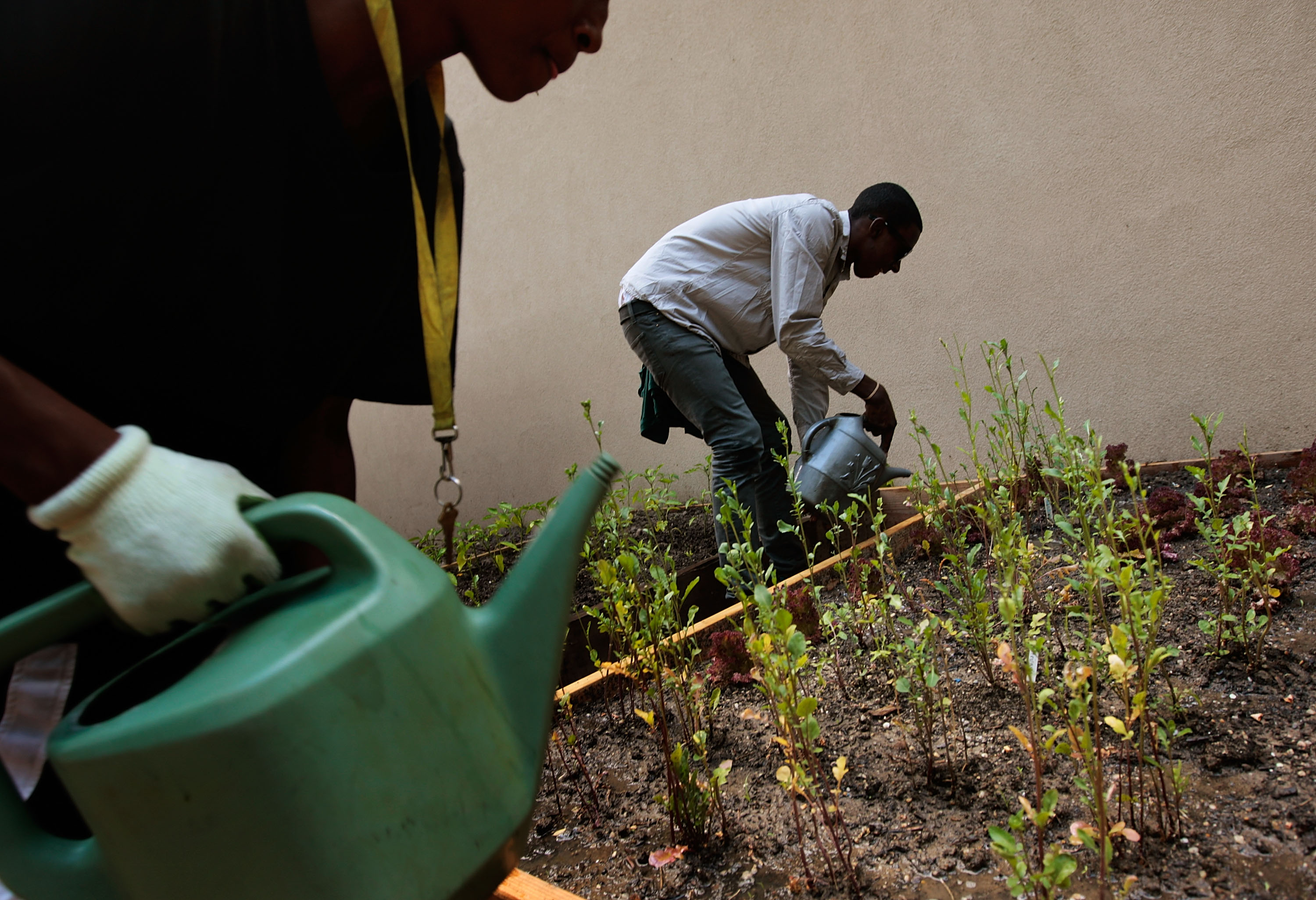
According to Fleming, the Hattie Carthan Community Garden — created as a tribute to Carthan’s tree activism — is one of the largest growing spaces to come out of the New York community gardening movement. Comprising an urban healing farm, a farmers market, and a series of ancestral apothecaries, the organization has nearly quadrupled its land holdings since Fleming took over in 2009.
That year, the garden crew converted a local toxic oil dump site into what is now the garden market. It’s just one example of yet another impact urban gardens and farms have on the historically disinvested neighborhoods they serve — to build resilience against climate change. While many standard agricultural practices in rural America exacerbate carbon and methane emissions, studies show that many urban farming spaces are a climate boon to the communities they serve.
“[Urban agriculture helps with] stormwater runoff mitigation, reducing heat in cities due to the heat island effect, air filtration, carbon sequestration, mitigating flooding, attracting pollinators, mitigating against drought conditions through rainwater capture, improving soil quality … ” Miller explained. An emphasis on local food systems also reduces emissions associated with extensive food transport—and these localized systems have proven to be more nimble and responsive to shocks than the longer, globalized supply chains we’ve come to rely on.
With New York City experiencing increasingly severe climate impacts, from wildfire smoke to extreme flooding, the natural benefits of urban gardens offer a small-scale solution for affected residents. While urban gardens alone will not prevent climate disasters, they do provide some mitigation for things like air pollution and extreme heat.
Miller added that the beautification effects of urban gardens and green space also encourage community members to take better care of the land by reducing litter and creating a shared investment in the community. The vast urban grower community didn’t arise under the banner of climate advocacy, but those benefits are emerging from the fight for healthy food and beautiful outdoor spaces in New York’s historically disinvested and food-insecure boroughs.
Growing into the future
It’s estimated that there are about 550 community gardens and over 800 gardens held in land trusts or public housing developments across New York City today. Alongside them, there are almost 750 garden schools working to expand the history and knowledge of food cultivation and intentional urban land practice to the next generation.
“We are truly empowering the people from our geographies — of all ages — to enter back into right relationship with the earth,” Fleming said.
In 2010, Fleming and Washington, along with several other food justice organizers, founded Farm School NYC. This hub for education, with an eye toward Black and Brown growers, draws on the ancestral and traditional expertise of New York’s residents to teach community members how to create their own localized food systems.
Francine Miller was a member of the Farm School NYC’s inaugural class in 2010. Miller went on to teach at the school for a time and emphasized the city’s cultural and ancestral diversity as a foundation of the program’s agricultural success—immigrant populations and multi-generational land stewards have come together to build a resource for intentional urban agricultural practice through this school.
“The Farm School is this amazing city-wide, BIPOC-led initiative that really tries to reach deep into Black and Brown communities to support their agricultural leadership,” Miller said. “What I think is special about this is there is truly an ecosystem of Black-led organizations and training opportunities; there is so much potential support for Black farmers in New York.”

Among this next generation of Black growers are people like Nkoula Badila — who has translated the successful community garden formula into spaces of all kinds, including home and backyard gardens, as a continuation of the battle for food, green space, and sustainable agriculture practices.
In June 2020, Badila created her garden Eden as a space to cultivate mindfulness, community interaction, and mental well-being during the stress of COVID-19 lockdowns and Black Lives Matter protests. Drawing from the same principles and goals of the community garden movement of the past, and spurred by similar moments of social unrest and health crises, Badila has expanded her backyard safe haven into a resource and community connector through Grow Black Hudson, an informal organization that provides educational resources, workshops, and supplies to others in her community to replicate what she’s built in her own backyard.
“This is not just about food, but about all the ways that we can grow as a people,” Badila said.
And although neither Badila, Washington, or Fleming call themselves climate activists, the spaces they are creating for Black people to celebrate their roots and nourish their communities are also propagating the types of physical green spaces that have the potential to reduce climate impacts in some of New York’s frontline regions.
“It’s so important to have a relationship to land and to food,” Washington said. “That’s where our power is. Look at the color of your skin. Your skin is soil.”
